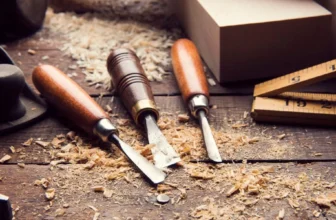
Building a woodworking tool collection on a budget doesn't have to be daunting. Start by assessing what you really need for your projects and skill level. Prioritizing essential hand tools can save you money and space. There are affordable options out there, but knowing where to look is key. Let's explore some practical strategies to help you gather the tools you need without breaking the bank.
Assessing Your Needs and Priorities
How do you know which woodworking tools are essential for your projects? Start by assessing your needs and priorities.
Think about the types of projects you want to tackle. Are you focusing on furniture, cabinetry, or smaller crafts? Each requires different tools. Make a list of must-have tools for your specific projects, like a saw, a drill, or a sander.
Next, consider your skill level. If you're just starting, prioritize basic tools that can grow with you.
Also, evaluate your workspace; limited space might mean you need compact, versatile tools. Finally, set a budget. Knowing what you can spend will help you narrow down your choices.
Exploring Affordable Tool Options
When you're on a budget, where do you find the best woodworking tools without compromising quality? Start by exploring reputable brands that offer essential tools at lower price points.
Look for hand tools like chisels, saws, and planes, which often provide great quality without the hefty price tag. Consider investing in used tools or refurbished options from local shops or online marketplaces. You'll often find hidden gems that perform just as well as new ones.
Another option is to check out budget-friendly tool manufacturers that cater to beginners.
Lastly, don't overlook tool libraries or community workshops; they can give you access to high-quality tools without the upfront cost.
Finding Deals and Discounts
Where can you uncover the best deals on woodworking tools? Start by checking out local hardware stores during sales events.
Many retailers offer seasonal discounts that can save you a significant amount. Don't forget to explore online marketplaces like eBay and Craigslist, where you can often find gently used tools at lower prices.
Joining woodworking forums or social media groups can also lead to exclusive deals shared by fellow enthusiasts. Additionally, keep an eye on manufacturer websites for clearance sections or promotional offers.
Signing up for newsletters or loyalty programs can grant you access to special discounts. By combining these strategies, you'll build your tool collection without breaking the bank.
Happy hunting!
DIY Alternatives and Upcycling Tools
Exploring DIY alternatives and upcycling tools can significantly expand your woodworking collection without straining your budget. You can transform everyday items into essential tools. For instance, an old door can become a sturdy workbench, while discarded pallets can be repurposed into clamps or storage solutions.
You can also create your own jigs using scrap wood, saving money while tailoring tools to your specific needs. If you're handy with electronics, consider refurbishing old power tools; they often just need a little maintenance to work like new.
Don't overlook yard sales or thrift shops for hidden treasures. With creativity and a bit of effort, you can build a diverse woodworking toolkit that reflects your style and needs—all while keeping costs low.
Conclusion
Building a woodworking tool collection on a budget is totally achievable with a bit of planning and creativity. By assessing your needs, exploring affordable options, and hunting for discounts, you can gather essential tools without breaking the bank. Don't forget to consider DIY solutions and upcycling to stretch your resources even further. Stay flexible and adapt your collection as your skills grow, and you'll enjoy woodworking without the financial stress. Happy crafting!




